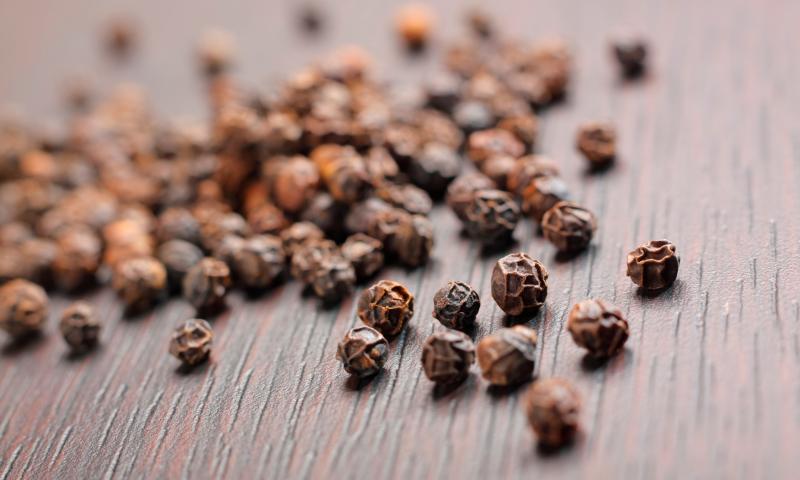 />
/>
Peppercorn, scientifically known as Piper nigrum, is one of the most widely used and recognized spices in the world. The tiny, round, and pungent black or white balls have flavored dishes for centuries, and its widespread use and popularity today owes itself to a rich history of trade, exploration, and culinary traditions.
Botanical Characteristics
The Piper nigrum plant belongs to the Piperaceae family and is a tropical climbing vine native to South India. The plant thrives in hot and humid climates and can grow up to 10 meters in height. Its leaves are heart-shaped, shiny, and dark green. The small flowers of the plant are arranged in pendulous spikes, which eventually mature into the fruit – the peppercorns. Depending on the harvesting time and processing method, peppercorns can be categorized as:
Black Peppercorns: Harvested when still unripe and green, then dried until they turn dark.
White Peppercorns: The matured version, wherein the outer layer of the black peppercorn is removed.
Green Peppercorns: These are unripe peppercorns that are preserved in a way to maintain their green color.
Red Peppercorns: Fully ripe peppercorns, though rare, can sometimes be found in specialty stores.
Chemical Composition
Peppercorns are packed with several compounds, but the one that stands out is "piperine," responsible for the characteristic spiciness of black pepper. Other essential oils, such as pinene, sabinene, limonene, and caryophyllene, give the peppercorn its aromatic quality. Additionally, it contains small amounts of vitamins like Vitamin K, Vitamin C, and a range of B-vitamins. Minerals such as calcium, magnesium, phosphorus, potassium, and sodium are also present in trace amounts.
Historical Facts
The history of pepper is intertwined with the history of exploration and trade. It is believed that peppercorns were used as a spice in India as far back as 2000 BCE. Ancient Romans and Greeks also treasured it, often using it as a form of currency or offering it as a tribute. During the Middle Ages, the demand for pepper led to exploratory voyages, including those by the famous explorer Vasco da Gama, which subsequently paved the way for the European colonization of India. By establishing a direct sea route to India, Portugal broke the Venetian monopoly on the European pepper trade.
General Health Benefits
Peppercorns, particularly due to the presence of piperine, are known for several general health benefits:
Digestive Aid: It can help promote the production of digestive enzymes, enhancing the digestive process.
Antioxidant Properties: Piperine has antioxidant properties that can neutralize harmful free radicals in the body.
Enhances Nutrient Absorption: Piperine can increase the absorption of certain nutrients, like selenium, beta-carotene, and B-vitamins, from the intestines.
Natural Preservative: Its antibacterial properties make it effective in preserving food.
Indications for Use
While avoiding references to specific illnesses or diseases, peppercorns are traditionally indicated for:
Enhancing the flavor profile of a variety of dishes, from savory to sweet.
Acting as a natural preservative in pickles and certain dishes.
Assisting with digestive discomfort, when used as a seasoning.
Used in various traditional rituals and ceremonies in many cultures.
In conclusion, peppercorns have been more than just a kitchen staple. Their rich history, coupled with the potential health benefits, makes them a spice that has stood the test of time. As with any food or spice, it's always best to consume it in moderation and consult with health professionals regarding any specific health-related queries.
